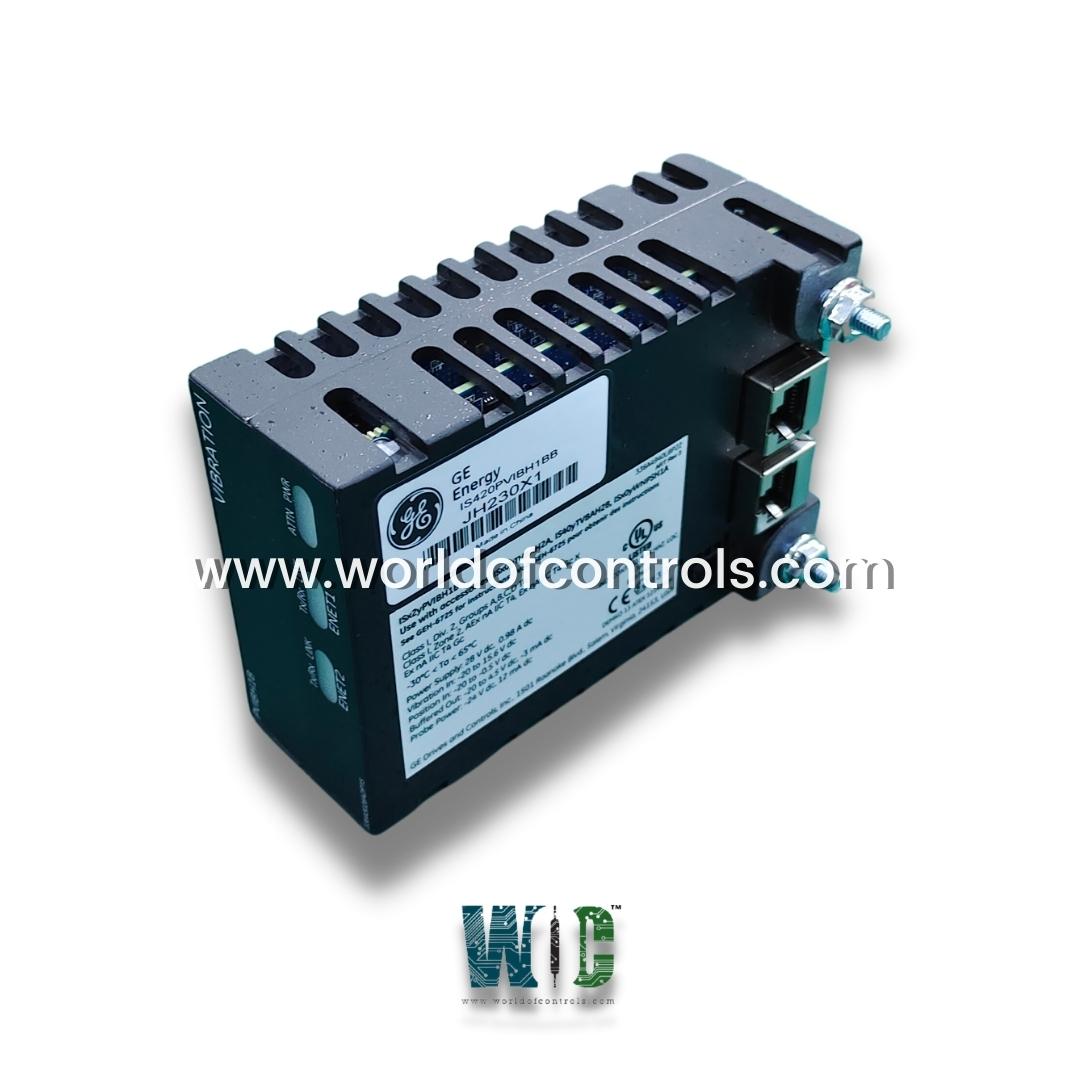
World Of Controls understands the criticality of your requirement and works towards reducing the lead time as much as possible.
IS420PVIBH1BB - Vibration Monitor Board is available in stock which ships the same day.
IS420PVIBH1BB - Vibration Monitor Board comes in UNUSED as well as REBUILT condition.
To avail our best deals for IS420PVIBH1BB - Vibration Monitor Board, contact us and we will get back to you within 24 hours.
SPECIFICATIONS:
Part Number: IS420PVIBH1BB
Manufacturer: General Electric
Series: Mark VIe
Product Type: Vibration Monitor Board
Number of input channels: 24
Number of relay channels: 12
Trip Solenoid Rating: 125 V dc
Span: -8 mV to +45 mV
Power supply voltage: 28 V dc
Voltage Range: 18 - 32 VDC
Mounting: DIN-rail mounting
Technology: Surface mount
Operating temperature: 40 to 70°C
Size: 168 x 150 x 55 mm
Repair: 3-7 Day
Availability: In Stock
Country of Origin: United States
FUNCTIONAL DESCRIPTION:
IS420PVIBH1BB is a Vibration Monitor Board manufactured and designed by General Electric as part of the Mark VIe Series used in GE Distributed Control Systems. The Vibration Monitor Pack provides the electrical interface between one or two I/O Ethernet networks and the TVBA vibration terminal board. The pack contains a processor board common to all Mark VIe distributed I/O packs an acquisition board and a daughter board. The pack uses channels 1 through 8 to read vibration are proximity information from the following sensor types. Proximitor accelerometers with integrated output (Channels 1 - 3 only) Channels 9 through 12 only support proximitor and channel 13 can input either a key phasor signal type. Input to the pack is through dual RJ45 Ethernet Connectors and a 3-pin input. The PVIB supports Dual Ethernet networks for frame rates slower than 100 Hz. It supports a single ethernet network for frame rates of 3.125, 6.25, 12.5, and 100 Hz. Output is through a DC-37 pin connector that connects directly with the associated terminal board connector.
Securely mount the desired terminal board Directly plug one PVIB I/O pack for simplex or three PVIB I/O packs for TMR into the terminal board connectors. Mechanically secure the packs using the threaded studs adjacent through the Ethernet ports. The studs slide into a mounting packet specified to the terminal board type. Plug in one or two Ethernet cables depending on the system configuration. The pack will operate over either port. If dual connections are used the standard practice is to connect ENET1 to the network associated with the R controller.
OPERATION:
The processor board in the pack is common to all Mark VIe Ethernet I/O packs. It contains the following:
The processor board connects to an acquisition board specific to the I/O pack function. Upon application of input power, the soft-start circuit ramps up the voltage available on the processor board. The local power supplies are sequenced, and the processor reset is removed. The processor completes self-test routines and then loads application code specific to the I/O pack type from flash memory. The application code reads board ID information to ensure the correct matching of the application code, acquisition board, and terminal board. With a good match, the processor attempts to establish Ethernet communications, starting with the request of a network address. The address request uses the industry standard dynamic host configuration protocol (DHCP) and the unique identification read from the terminal board. After Ethernet initialization, the processor programs the on-board logic, run the application, and enables the acquisition board to begin operation.
VIBRATION MONITORING HARDWARE
The PVIB application-specific hardware consists of the analog filter acquisition board (BAFA), and the analog processing daughterboard (KAPA). The analog filter acquisition board provides the signal conditioning to center and amplify signal to improve analog-to-digital resolution. The first eight channels can be used for vibration and position signal information. Channels 9 through 12 support position information only. Channel 13 contains circuitry to support a pedestal or slot-type Keyphasor. Each of the 13 differential amplifier inputs has a digital-analog converter (DAC) bias adjustment to null the DC content of the signal to better center the signal for the analog-to-digital (A/D) input range.
WOC has the largest stock of OEM replacement parts for GE Distributed Turbine Control systems. We can also repair your faulty boards and supply unused and rebuilt boards backed up with a warranty. Our team of experts is available round the clock to support your OEM needs. Our team of experts at WOC is happy to assist you with any of your automation requirements. For pricing and availability on any parts and repairs, kindly contact our team by phone or email.
What types of sensors are compatible with this board?
The board is compatible with Proximitor accelerometers (channels 1 - 3) and Keyphasor signals (channel 13). Channels 9 - 12 support only position sensors.
How many input channels does the Vibration Monitor Board have?
The board features 24 input channels, with channels 1 through 8 for vibration and proximity information, and channels 9 through 12 supporting only position information.
How does the board communicate with other devices?
It uses dual RJ45 Ethernet connectors for communication, supporting dual Ethernet networks for frame rates slower than 100 Hz, or a single Ethernet network for higher frame rates (up to 100 Hz).